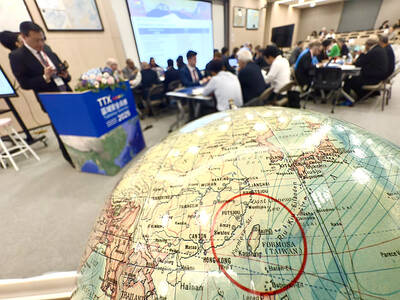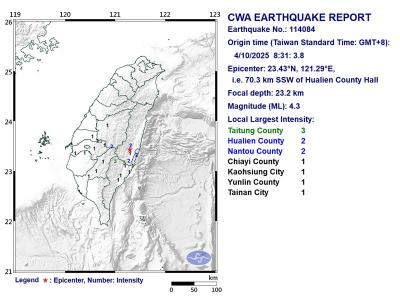The US Department of Defense last week announced the creation of a tri-service Air-Sea Battle Office (ASBO) that, according to defense analysts, is directed mostly at the Western Pacific and its principal actor, China.
The new office, which was created on Aug. 12, but whose existence was only confirmed in a press release on Wednesday, integrates the US Navy, Air Force and Marine Corps and will develop a “comprehensive concept to counter emerging anti-access/area-denial (A2/AD) challenges.”
One Pentagon official has described the office as a “highly classified clearinghouse set up to consider a wide range of current and potential threats.”
The ASB concept will guide the services to ensure continued US advantage against the global proliferation of advanced military technology and A2/AD capabilities, Marine Corps News reported on Friday.
The tri--service collaboration will “leverage military and technological capabilities that reflect unprecedented Navy, Marine and Air Force collaboration, cooperation, integration and resource investments,” it said.
Each service will dedicate a minimum of two field-grade officers or equivalents in the civil service to the new office. Initially, the small group will involve a core group of 12 to 15 officers.
According to several reports, the US Army will eventually be integrated into a larger ASB concept.
Emerging A2/AD threats include conventional ballistic missiles, long-range precision cruise missiles, advanced integrated air and missile defense systems, electronic and cyberwarfare capabilities, submarines, surface combat vessels and modern combat aircraft.
Although Pentagon officials deflected several questions by reporters at a background briefing on whether the office would target China and said it was not directed at a specific actor, it is largely understood the ASBO will regard it as its principal contingency.
In recent years, the People’s Liberation Army has invested heavily in acquiring and developing A2/AD technologies, including the development of the Dong-Feng 21D land-based anti-ship ballistic missile.
A2/AD would be a critical component of China’s strategy in any attempt to take Taiwan by military force, using those capabilities to delay or prevent US entry into the conflict on Taiwan’s side.

Taiwan is stepping up plans to create self-sufficient supply chains for combat drones and increase foreign orders from the US to counter China’s numerical superiority, a defense official said on Saturday. Commenting on condition of anonymity, the official said the nation’s armed forces are in agreement with US Admiral Samuel Paparo’s assessment that Taiwan’s military must be prepared to turn the nation’s waters into a “hellscape” for the Chinese People’s Liberation Army (PLA). Paparo, the commander of the US Indo-Pacific Command, reiterated the concept during a Congressional hearing in Washington on Wednesday. He first coined the term in a security conference last

DEFENSE: The National Security Bureau promised to expand communication and intelligence cooperation with global partners and enhance its strategic analytical skills China has not only increased military exercises and “gray zone” tactics against Taiwan this year, but also continues to recruit military personnel for espionage, the National Security Bureau (NSB) said yesterday in a report to the Legislative Yuan. The bureau submitted the report ahead of NSB Director-General Tsai Ming-yen’s (蔡明彥) appearance before the Foreign and National Defense Committee today. Last year, the Chinese People’s Liberation Army (PLA) conducted “Joint Sword-2024A and B” military exercises targeting Taiwan and carried out 40 combat readiness patrols, the bureau said. In addition, Chinese military aircraft entered Taiwan’s airspace 3,070 times last year, up about

A magnitude 4.3 earthquake struck eastern Taiwan's Hualien County at 8:31am today, according to the Central Weather Administration (CWA). The epicenter of the temblor was located in Hualien County, about 70.3 kilometers south southwest of Hualien County Hall, at a depth of 23.2km, according to the administration. There were no immediate reports of damage resulting from the quake. The earthquake's intensity, which gauges the actual effect of a temblor, was highest in Taitung County, where it measured 3 on Taiwan's 7-tier intensity scale. The quake also measured an intensity of 2 in Hualien and Nantou counties, the CWA said.

The Overseas Community Affairs Council (OCAC) yesterday announced a fundraising campaign to support survivors of the magnitude 7.7 earthquake that struck Myanmar on March 28, with two prayer events scheduled in Taipei and Taichung later this week. “While initial rescue operations have concluded [in Myanmar], many survivors are now facing increasingly difficult living conditions,” OCAC Minister Hsu Chia-ching (徐佳青) told a news conference in Taipei. The fundraising campaign, which runs through May 31, is focused on supporting the reconstruction of damaged overseas compatriot schools, assisting students from Myanmar in Taiwan, and providing essential items, such as drinking water, food and medical supplies,